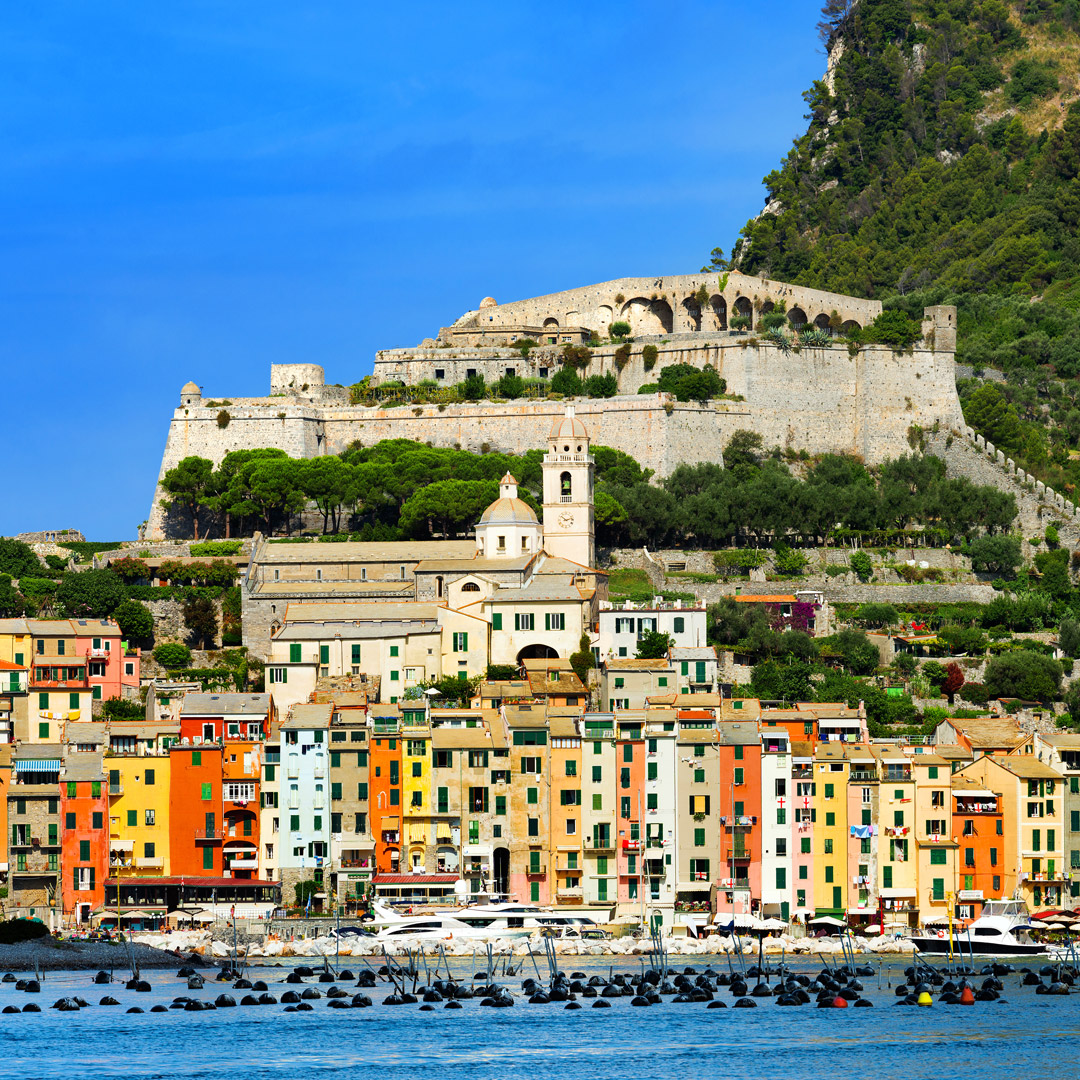Find your guesthouse
Delete a reservation xBook here:
- Best price guaranteed
- No additional commissions
- Instant and secure booking
- Almost always free cancellation
Portovenere
An absolutely unique location:
Placed on the westernmost edge of the Gulf of La Spezia, facing the islands of Palmaria, Tino and Tinetto, is Portovenere, one of the most charming seaside towns in Liguria. In addition to the aforementioned islands, the territory of Portovenere also includes the maritime villages of Le Grazie and Fezzano.
The ancient ‘Portus Veneris’ was a small Roman port between Luni and Sestri Levante. This early urban settlement has left barely any trace, but we know that its centre, the ‘Castrum Vetus’, occupied the area next to the church of St. Pietro. The maritime routes of Emperor Antoninus Pius (161 AD) confirm that Portovenere existed as a maritime centre during the Roman period, and was a ‘portus’ (harbour) whose inhabitants occupied the area of St. Pietro, now known as Piazza L. Spallanzani.
The Genoese surrounded the town with a 12th century defence system, whose impact on the town and its layout are still clearly visible: tower-houses arranged in rows were built along the shore, while a boundary wall, guarded by fortified towers, reached up to the castle.
Entry into the village is through a Romanesque door, which bears the inscription ‘Colonia Ianuensis 1113’; in its inner part is a 15th century fresco depicting the ‘White Madonna’, the town’s patron saint.
The houses that overlook the harbour are all tall and narrow, with brightly painted facades. They all have two entrances: one facing the beach, for boats, and one opposite the inner ‘caruggio’ street that runs parallel to the coast, but at a higher altitude.
At the end of the main ‘caruggio’ is a square with steps leading up to a church dedicated to St. Pietro.
The church of St. Pietro, built on a rock overlooking the sea, is placed in an exceptional location: from here, the view opens onto the Gulf of Poets and islands on one side, and the coves that lead to the Cinque Terre on the other.

In 1256, the Genoese decided to build the church on the ruins of a pre-existing early Christian temple. The construction is in Romanesque/Gothic Ligurian style, with typical black and white stripes. The older chapel and presbytery structure are preserved within the sacred building.
Below the church is a very evocative corner: the Arpaia cave, also known as Byron’s cave, which used to be the poet’s favourite location due to the clear and luminous colour of the sea.
Overlooking the town is Doria Castle, built by the Genoese in 1161, currently used as a venue for exhibitions and cultural events.
Going down towards the sea, in front of the main ‘caruggio’ doorway is the start of trail no.1, also known as ‘Alta Via delle 5 Terre’, which connects Portovenere to Levanto. Along its first stretch, you will reach the Muzzerone fort, built by the Genoese in the 16th century; nearby is also the Muzzerone climbing wall, one of the most renowned in the north-west of Italy, which is particularly busy at weekends with hikers and climbers coming from large cities such as Turin, Milan and Genoa.
In front of the village, separated by a small stretch of sea, is Palmaria, the first of three small islands in the archipelago of La Spezia. The island is well-connected to the mainland by an efficient boat service, and is characterised by two very different sides: the east-facing one with lush Mediterranean vegetation and beautiful beaches, and the west-facing one with steep cliffs overlooking the sea and caves. Prehistoric remains have been found in some of these caves, including the two known as ‘azzurra’ and ‘del piccione’. Palmaria is the largest island in Liguria, and is crossed through by a path that starts from its only town, Terrizzo. The route begins along the beach and continues up to the hills covered by luscious Mediterranean flora; the view from the top is particularly impressive, facing Portovenere and cliffs that descend sharply towards the sea.






